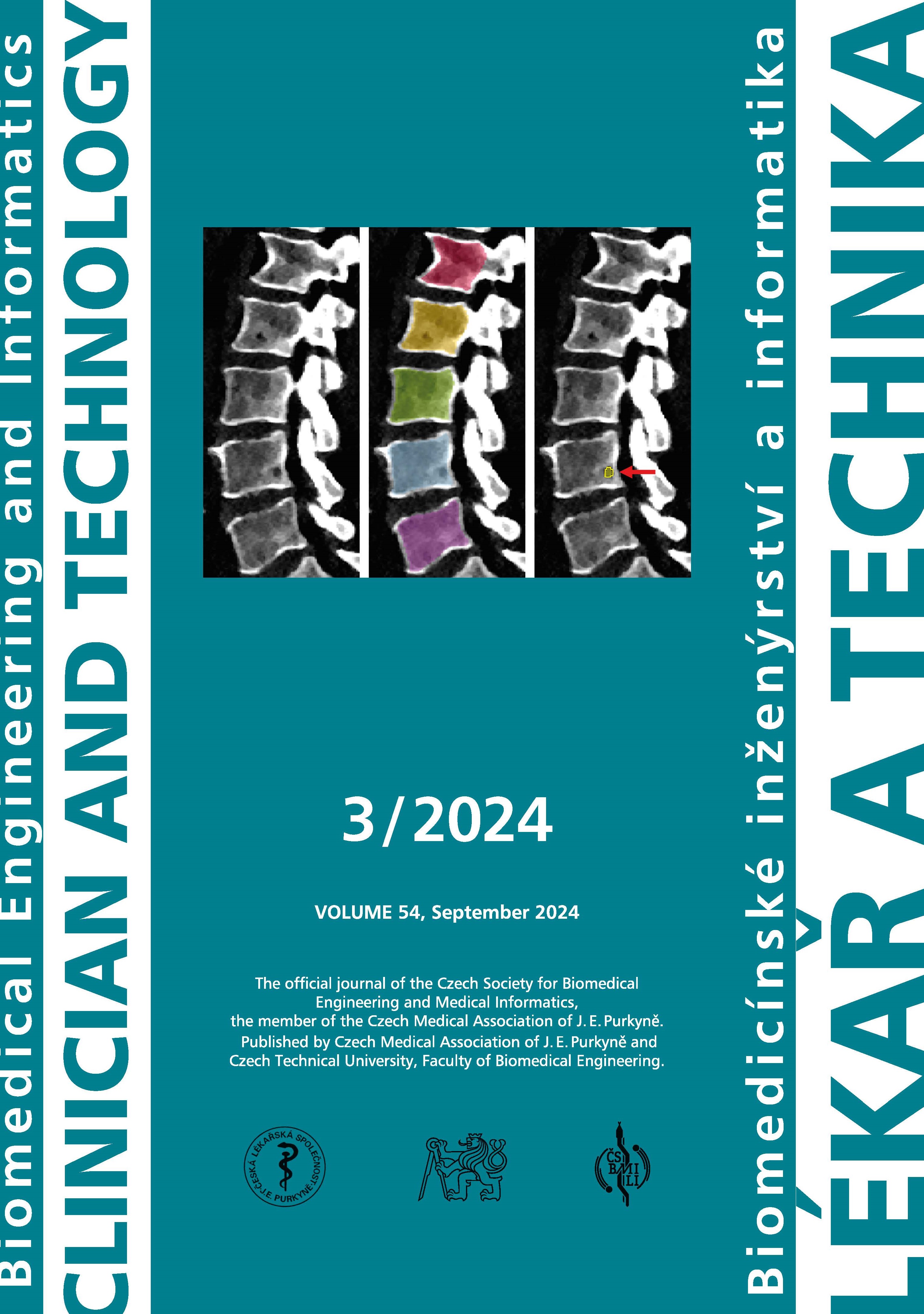UTILIZATION OF 3D SCANNING IN BURN ANALYSIS AND IDENTIFICATION
DOI:
https://doi.org/10.14311/CTJ.2024.3.03Abstract
Effective burn scar treatment requires objective measurement of burn severity and progression, and 3D scanning technologies could offer a valuable alternative to the current clinical assessments. This article discusses the use of 3D scanning to determine the area and extent of burns. The study involves a comparison of twelve burns in six patients using two CAD software. The article deals with the methodology of scanning burns, and subsequently describes in detail the methodology of determining the area of burns from a 3D scan. Methodologies for burn scanning and determining burn area from 3D scans were detailed, emphasizing the innovation's potential in surpassing traditional assessment methods like the Rule of nine and Palm method estimation. Twelve burns were scanned at least twice, allowing comparison of the burn area before and after a certain period of healing. The study revealed that 3D scanning provides an accurate approach to measuring burn areas, with minimal differences observed between software. Meshmixer software emerged as the preferred tool due to its intuitive features, underscoring the potential of 3D scanning to improve burn assessment and treatment planning. This approach enables the use of 3D scans to determine individual treatment according to the progression of healing, and at the same time opens up the possibilities of using 3D scans to design burn orthoses.
Downloads
Published
Issue
Section
License
Copyright (c) 2024 Bibiána Ondrejová, Monika Michalíková, Branko Štefanovič, Lucia Bednarčíková, Jozef Živčák

This work is licensed under a Creative Commons Attribution 4.0 International License.
Authors who publish with this journal agree to the following terms:
- Authors retain copyright and grant the journal right of the first publication with the work simultaneously licensed under a Creative Commons Attribution License (https://creativecommons.org/licenses/by/4.0/) that allows others to share the work with an acknowledgment of the work's authorship and initial publication in CTJ.
- Authors are able to enter into separate, additional contractual arrangements for the non-exclusive distribution of the journal’s published version of the work (e.g., post it to an institutional repository or publish it in a book), with an acknowledgment of its initial publication in this journal.
- Authors are permitted and encouraged to post their work online (e.g., in institutional repositories or on their website or ResearchGate) prior to and during the submission process, as it can lead to productive exchanges.
CTJ requires that all of the content of the manuscript has been created by its respective authors or that permission to use a copyrighted material has been obtained by the authors before submitting the manuscript to CTJ. CTJ requires that authors have not used any copyrighted material illegally, as for example a picture from another journal or book, a photo, etc. It is the author’s responsibility to use only materials not violating the copyright law. When in doubt, CTJ may ask the authors to supply the pertinent permission or agreement about the use of a copyrighted material.
The opinions expressed in CTJ articles are those of authors and do not necessarily reflect the views of the publishers or the Czech Society for Biomedical Engineering and Medical Informatics.


